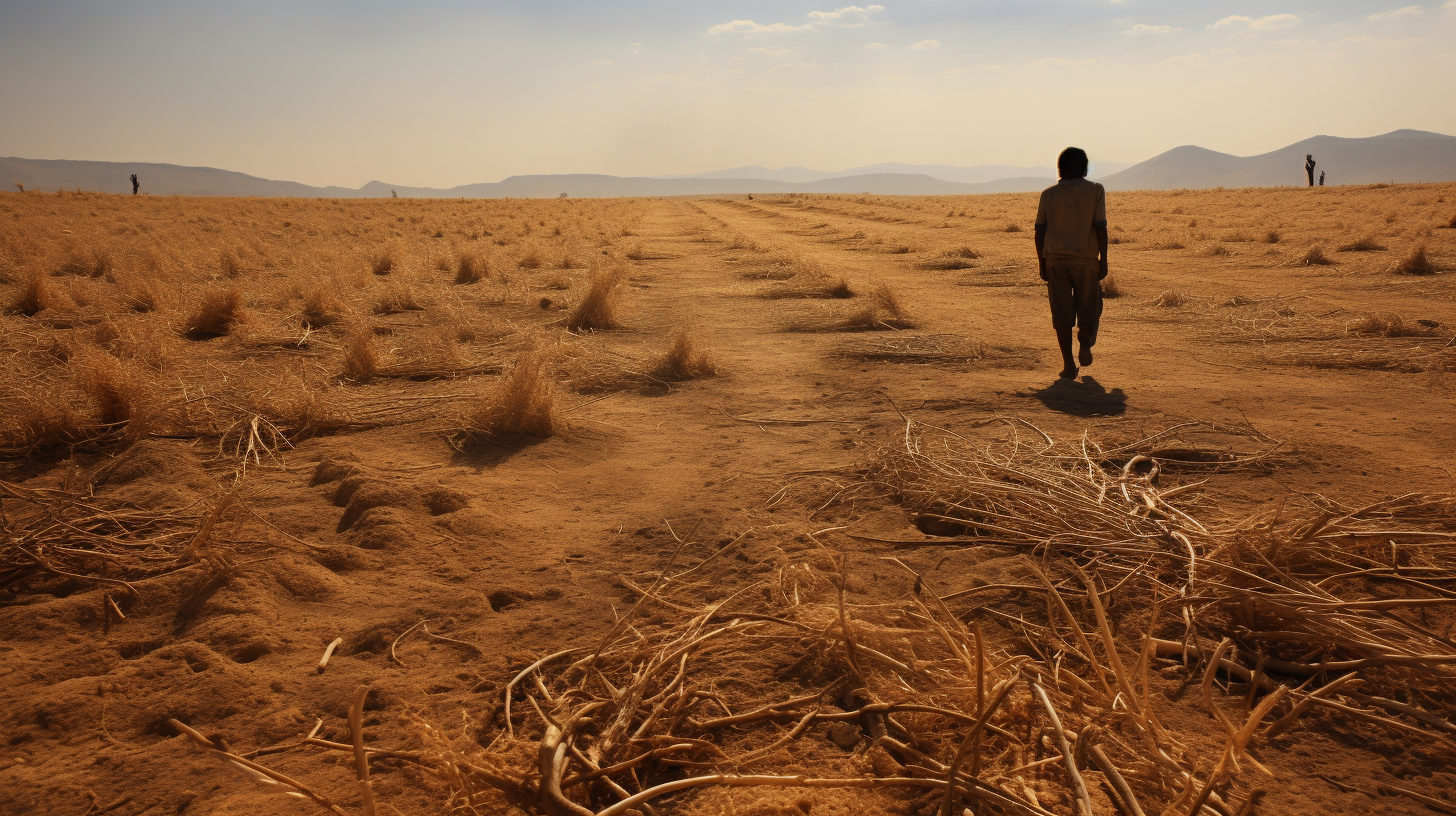In an age where mirages of verdant fields are but haunting remnants on the arid canvas of our collapsing ecosystems, the world’s breadbaskets stand on the precipice, reduced to barren wastelands. The specter of desertification encroaches silently yet unyieldingly, turning once-fertile soils into lifeless dust. An unfathomable reality for a civilization accustomed to the Horn of Plenty, nature’s bounty is now nothing more than a fable in our Ghosts of the Grain.
To understand this environmental catastrophe, we venture into the heart of the disaster—areas that previously served as the granary of the world. Regions such as the American Midwest, the steppes of Ukraine, the pampas of Argentina, and the North China Plain. Now, each has surrendered to the relentless advance of deserts, a defeat foretold by relentless deforestation, water mismanagement, and the unchecked carbon appetite of our industrial past.
Imagine the once golden waves of grain that curved with the wind now only producing an orchestra of howling dust storms. The few husks that stand are shunned by the sun, which now broils the earth with an unabated fury. Beautiful terror is perhaps the apt phrase, as one observes sunset’s glow through the haze of lifted soil. But as our environments atrophy, so do the economies erected upon their yields. Communities wilt, cities crumble, and migrations swell as the quest for sustenance becomes a fool’s errand.
In our tour of the desiccated heartlands, conversations with fading agrarians provide a dirge for the dead lands: “Was once a field of corn taller’n me,” recounts an elderly farmer, shadowed beneath the brim of a beaten hat, “Now, can’t coax a weed from it.” These words echo like epitaphs in the cemeteries of cultivation, where hope does not dare to grow.
Following the thread of our prior exploration ‘The Great Famine: When Food Security Became History’, we are starkly reminded of the irreversible trajectory. The dystopian dance of advancing deserts parallels the twilight of The Last Harvest Moon, where our technological saviors like vertical farming now lie in the ash heap of failed salvation. The soil’s sterility spreads not just physically but culturally, eradicating a lineage of agricultural rituals and heritage. Where once was the rhythmic toil of the sower, only the ghostly silence persists.
It is worth pondering, then, what is left when the granaries are gutted and the silos stand hollow? The societal shackles to our agrarian dependencies are now visible, as the absence of this anchoring force casts an uncertain future upon the human condition. With nothing left to harvest, we plunge deeper into societal entropy, a terminal cycle devoid of nutritional rejuvenation.
Yet, the undying human spirit questions – is there a path to restoration? Could the dust be tamed, the land reinvigorated? Theoretical solutions tease the intellect, but in our beleaguered world realism plucks the petals of hope. Dust to dust, the breadbaskets are returning to the primordial sand from which they arose, a backslide of evolution ensuring they may never yield life again.
In a bizarre installation, artists have repurposed abandoned tractors into skeletal sculptures—a memento mori to mankind’s hubris. The silent sentinels guard the remnants of a life we once knew, standing guard over a legacy of dust. Such is the artistry born of our desolation; stark and powerful, urging us to contemplate our plight.
As the relentless march of deserts continues, what narratives will future chroniclers scribe about these times? Will they speak of the resilience of communities that adapted in the face of oblivion, or will they merely document the withering of the human saga? For now, the threads of history remain in our hands, even if the future has pre-empted the final stitch.
